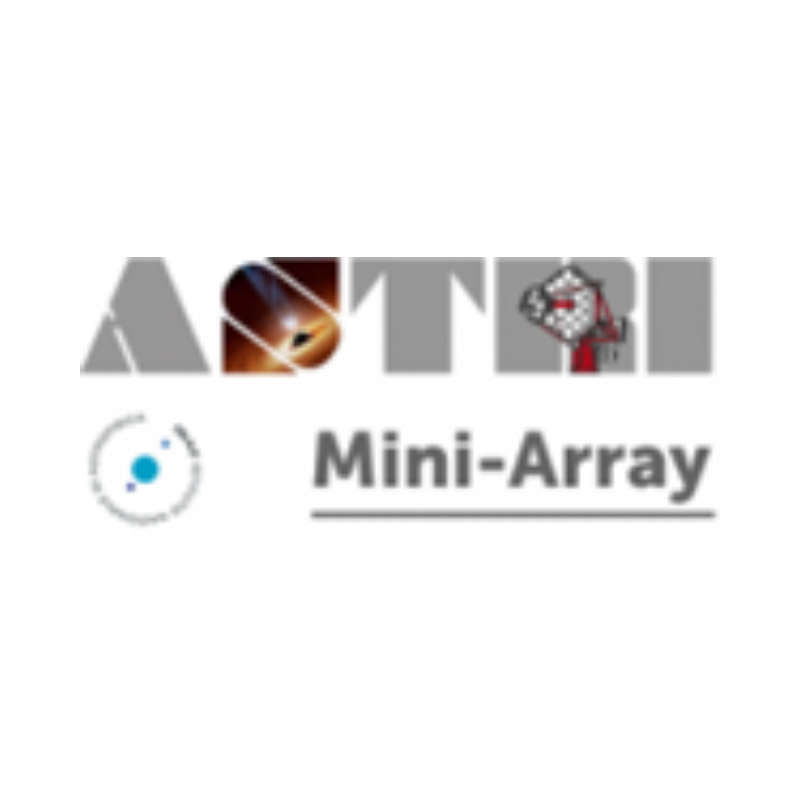
ASTRI
Astrofisica con Specchi a Tecnologia Replicante Italiana – A Small Size Telescope (prototype & array)
SHORT DESCRIPTION
ASTRI is a project aimed at the technological and scientific development of the next generation of IACT (Imaging Atmospheric Cherenkov Telescope) telescopes, dedicated to ground-based gamma-ray astronomy within the energy range between 1 TeV and a hundreds of TeV.
ROLE OF THE OBSERVATORY
ASTRI was initially funded as a flagship project by the Ministry of University and Research (MUR); it now stands as one of the major ground-based astronomy projects led by the National Institute of Astrophysics (INAF) . Giovanni Pareschi of OAB serves as Principal Investigator.
ASTRI TEAM
The ASTRI project involves several INAF Institutes, as well as other Italian and foreign Institutes and Universities.
| Responsabili progetto Giovanni Pareschi (Principal Investigator) Salvatore Scuderi (Project Manager) Andrea Giuliani (Project Scientist) |
| Istituti INAF coinvolti e relativi referenti IASF Milano – Nicola La Palombara IASF Palermo – Teresa Mineo IAPS Roma – Martina Cardillo IRA Bologna – Marcello Giroletti OA Brera – Andrea Bulgarelli OA Catania – Stefano Vercellone OA Padova – Giuseppe Leto OA Roma – Luca Zampieri |
Altri Istituti e Università e i relativi referenti
Fundació Galileo Galilei – Adriano Ghedina (direttore)
Instituto de Astrofísica de Canarias – Josefa Becerra
Università di San Paolo del Brasile FAPESP – Elisabete M. de Gouveia Dal Pino
North West University del Sudafrica – Markus Boettcher
Università di Ginevra – Roland Walter
Università di Perugia – Gino Tosti
Università di Padova – Alberto Franceschini
The public engagement related to the ASTRI project is managed by the INDACO group led by Anna Wolter.
TIMELINE
2010 – 2027
WEBSITE
ASTRI: http://www.astri.inaf.it/
CONTACTS
giovanni.pareschi AT inaf.it
CREDITS
Web page content: A. Wolter, L. Paganini and G. Pareschi for ASTRI.
LONG DESCRIPTION
The ASTRI-Horn prototype telescope, with a 4 m diameter, is installed at the Serra la Nave site on the slopes of Mount Etna (Sicily) and is managed by the INAF-Osservatorio Astronomico di Catania (INAF-OACt).
It is named in honor of Guido Horn D’Arturo, the Italian astronomer who invented tessellated mirrors for telescopes. ASTRI-Horn is the first telescope for Cherenkov astronomy with a wide field of view (10 degrees) to adopt the very compact, aplanatic, Schwarzschild-Couder dual-mirror optical configuration, with a camera equipped with SiPM silicon detectors.
Building on the expertize developed with ASTRI-Horn, INAF is now focused on implementing the second phase of the project: a group of nine Cherenkov telescopes – known as the ASTRI Mini-Array – at the Teide Observatory, on the island of Tenerife (Canary Islands, Spain). These telescopes will be spaced approximately 250 m apart. Telescopes and cameras are similar in design to ASTRI-Horn, but include some improvements.
The project also benefits from local support by the Instituto Astrofisico de Canarias (IAC), which hosts the infrastructure, and the Fundacion Galileo Galilei (FGG, governed by INAF), with additional contribution from various international institutions, including Universidade de São Paulo (USP, Brazil), North-West University (South Africa), and Université de Geneve, (Switzerland).
The ASTRI-Horn and ASTRI Mini-Array telescopes serve as prototypes for the Small Size Telescopes (SST) to be implemented at the southern site of the Cherenkov Telescope Array Observatory (CTAO), which is slated to become operational in Paranal (Chile) in 2027.
The goal of the ASTRI Mini-Array is to conduct for the first time, starting in 2025, stereoscopic observations in Cherenkov light with wide-field telescopes, enabling the study of astronomical gamma-ray sources in the 1 to 200 TeV energy range.
Thanks to its optimal angular and energy resolutions, the ASTRI Mini-Array observations will complement those of existing high-altitude particle detectors in the northern hemisphere, such as the Large High Altitude Air Shower Observatory (LHAASO) and the High-Altitude Water Cherenkov Observatory (HAWC) which are simultaneously monitoring the sky within the same energy range.
